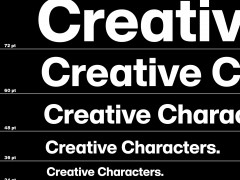DC Circuit: Times New Roman is in, Garamond is out
As announced the DC Circuit does not endorse Garamond.
In its official statement “Federal Rule of Appellate Procedure 32(a)(5) the requires courts of appeal to accept briefs in any proportional typeface so long as the typeface has serifs and is at least 14-point in size.”
“However, the court has determined that certain typefaces, such as Century and Times New Roman, are more legible than others, particularly Garamond, which appears smaller than the other two typefaces.”
The court announced “a revision to the Circuit’s Handbook of Practice and Internal Procedures to encourage the use of typefaces that are easier to read and to discourage use of Garamond.”
“Briefs may use either a proportionally spaced or a monospaced face and must be set in a plain, roman style, although italics and boldface may be used for emphasis. Case names must be italicized or underlined. If a brief uses a proportionally spaced face, the typeface must be at least 14-point and must include serifs, but sans-serif type may be used in headings and captions.”
“Certain typefaces can be easier to read, such as Century and Times New Roman. The Court encourages the use of these typefaces. Briefs that use Garamond as the typeface can be more difficult to read and the use of this typeface is discouraged. If a brief uses a monospaced face, it may have no more than 10 ½ characters per inch. Briefs must be double-spaced and printed on one side of the page only. Evasion of the length limitations may result in the Court’s rejection of the brief.”
The DC Circuit has announced that it is officially anti-Garamond. pic.twitter.com/6B94IXWzCX
— southpaw (@nycsouthpaw) March 17, 2021
Garamond is a group of many serif typefaces, named for sixteenth-century Parisian engraver Claude Garamond, generally spelled as Garamont in his lifetime. Garamond-style typefaces are popular and particularly often used for book printing and body text.
Garamond's types followed the model of an influential typeface cut for Venetian printer Aldus Manutius by his punchcutter Francesco Griffo in 1495, and are in what is now called the old-style of serif letter design, letters with a relatively organic structure resembling handwriting with a pen, but with a slightly more structured, upright design.
Following an eclipse in popularity in the eighteenth and nineteenth century, many modern revival faces in the Garamond style have been developed. It is common to pair these with italics based on those created by his contemporary Robert Granjon, who was well known for his proficiency in this genre.
However, although Garamond himself remains considered a major figure in French printing of the sixteenth century, historical research has increasingly placed him in context as one artisan punchcutter among many active at a time of rapid production of new typefaces in sixteenth-century France, and research has only slowly developed into which fonts were cut by him and which by contemporaries; Robert Bringhurst commented that “it was a widespread custom for many years to attribute almost any good sixteenth-century French font” to Garamond.
As a result, while “Garamond” is a common term in the printing industry, the terms “French Renaissance antiqua” and “Garalde” have been used in academic writing to refer generally to fonts on the Aldus-French Renaissance model by Garamond and others writes Wikipedia.
Yet many “Garamond' revivals of the early twentieth century are actually based on the work of a later punchcutter, Jean Jannon, whose noticeably different work was for some years misattributed to Garamond.
The saga continues.
Tags/ typeface, type design, times new roman, france, century, usa, engraver





.jpg)














